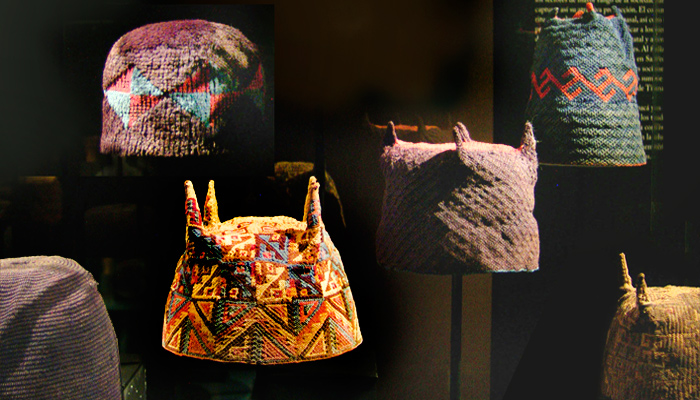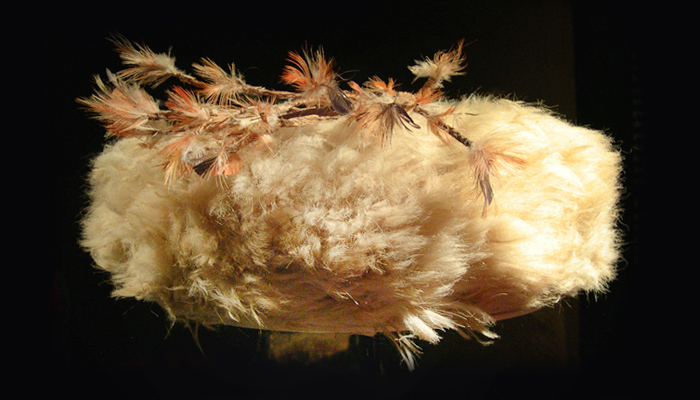The Tiwanaku Centuries A.D. 500 – 1000
The four-cornered caps and fur caps represented the most distinctive headdresses worn by the peoples of the chilean desert during the Tiwanaku hegemony.
This period was marked by relations between the desert peoples and Tiwanaku, the powerful state that came to dominate Lake Titicaca after Pucara. In the Azapa Valley, State officials established small agricultural colonies to provide the Empire with valley and sea products, and to strengthen trade ties with the local farmers and fishermen. Toward A.D. 800, the growth of these economic interests led to the establishment of an administrative center midway up the valley.
In contrast, in San Pedro de Atacama, Tiwanaku applied a strategy of ideological persuasion with the society’s highest-ranking sectors, to capture its attractive production. The ritual consumption of hallucinogenic snuffing powders, as well as fine gifts, contributed to identifying the members of the local elite with State ideology and to elevating their status within their communities. By the end of this period, San Pedro’s economic boom and the position attained by its upper-class sectors depended in large measure on the connections that had been established with the altiplano center of Tiwanaku.
The four-cornered caps in Tarapacá and the fur caps in Antofagasta represented the most distinctive headdresses worn by those with ties to Tiwanaku; however, the period’s cephalic attire also included hemispherical caps, velvet berets and headbands.
Animación construcción de un gorro de cuatro puntas





































